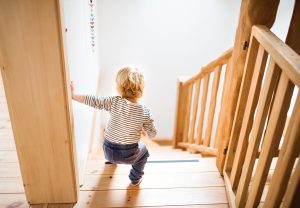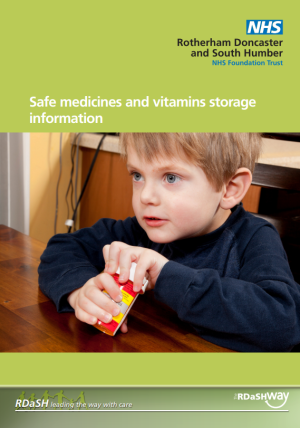Sudden Infant Death Syndrome
Sudden Infant Death Syndrome is the sudden, unexpected and unexplained death of a baby or young child. It usually occurs during sleep but can happen anywhere and at any time. Sudden Infant Death Syndrome is a rare condition. Preparation for parenting begins early in pregnancy and a Doncaster health visitor will make contact with you around 28 week gestation, where sudden infant death syndrome and many other health topics are topics discussed.
There are ways to reduce the risk of Sudden Infant Death Syndrome:
- Place your baby on their back to sleep, in a cot in your room for the first six months
- Place your baby with their feet to the foot of the cot
- Use lightweight sheets and blankets and a suitable mattress
- Prevent your baby becoming overheated
- Keep your baby’s head uncovered while sleeping
- Breastfeed your baby
- Don’t smoke in pregnancy or let anyone smoke in the same room as your baby
- Don’t share a bed with your baby
- Don’t sleep on a sofa or chair with your baby.
Never sleep on a sofa or in an armchair with your baby
This is one of the most high risk situations for your baby. Studies have found that sharing a sofa or armchair with a baby while you both sleep is an extremely high risk of sudden infant death syndrome. One study found that approximately one-sixth of infants in England and Wales who died of Sudden Infant Death Syndrome were found sleeping with an adult on a sofa.
Make sure that you do not accidentally fall asleep with your baby on a sofa. If you think you might fall asleep, put the baby down in a safe place to sleep. If you are breastfeeding, have your partner stay up with you, breastfeed in a different position where you are confident you might not fall asleep, or feed the baby somewhere else.
- Lullaby Trust – Safer sleep for babies
- iHV Top Tips for Parents – Safer sleep for your baby
- Lullaby Trust – Bed Sharing Fact Sheet
Safety in the home
Each year 40,000 under-fives are admitted to hospital following accidents, and lots of these accidents were preventable. It’s a good idea to take the time to ‘crawl’ around your home and get an  idea of where the dangers to your child might lie. Seeing things at your child’s eye level will give you a clear appreciation of safety issues you may not have considered, allowing you to safety proof your home from top to bottom.
idea of where the dangers to your child might lie. Seeing things at your child’s eye level will give you a clear appreciation of safety issues you may not have considered, allowing you to safety proof your home from top to bottom.
There is support available locally from your health visitor and community nursery nurse. A member of the health team will visit you at home or invite you to developmental reviews during the first three years of your child’s development and will be able to answer any questions or concerns you have.
Watch this short clip for Home Safety Tips
Safe storage of medicines
It is really important to keep medicines stored safely out of the reach of babies and children.
Click on the image below for tips on how to keep medicines or vitamins safe
Drowning
Drowning is the second leading cause of injury-related death for under-fives, on average 13 children die each year; 90% of these children were aged one to four years old. Many of these happened in the bath, babies can drown in just 3cm of water. For this reason it’s extremely important to NEVER leave your baby alone in the bath, not even for a moment. Ponds, paddling pools and swimming pools have increased risks as children get older and more mobile – always be on your guard around any type of water.
Adult supervision is crucial as is preventing access to garden ponds/pools. Immediate resuscitation significantly increases the likelihood of a good outcome.
iHV Top Tips for Parents (Minor Illness & Reducing Accidents) – Water safety
Burns and scalds
Burns and scalds are the fourth highest cause of hospital admissions for under-fives. The injuries can be disabling and disfiguring. Hot drinks cause most of the injuries particularly around the age 12 to 23 months. It’s important to be aware that drinks can still burn after 15 minutes; hot bathwater causes the most serious injuries. Other significant causes of burns/scalds are hot water on cookers, kettles, radiators and pipes, and hair straighteners. The risks change as the child develops, for example when your child’s reach extends.
Smoke kills, but burns can be very serious injuries requiring long periods of treatment. Please don’t be afraid to ask a health professional or a member of staff from your local Family Hub about fire risks and how to get information about fitting of free/low cost smoke alarms. Fire and rescue services carry out free fire safety checks and some families are eligible for free alarms.
Watch this short clip for a quick guide to safety in the kitchen
iHV Top Tips for Parents – Burns & scalds
Choking, suffocation and strangulation
Choking, suffocation and strangulation are the leading cause of accidental death among the under-fives, on average 28 children die each year.
Things to consider:
The importance of cutting up food, supervising eating, keeping small objects out of reach and ensuring window blind cords are safe.
- iHV Top Tips for Parents – Choking, suffocation & strangulation
- iHV Top Tips for Parents – Preventing choking
- Rospa – Blind Safety
Falls
Falls are the main cause of injury-related hospital admissions for under-fives with approximately 20,000 per year, most admissions are from furniture falls, falls from stairs and steps. Deaths are rare, about five a year. Children under one mostly fall from beds or highchairs, or while being carried.
Your health visitor or nursery nurse can advise you about the hazards and safety for babies and children on raised surfaces, consider fitting safety gates and window locks.
iHV Top Tips for Parents (Minor Illness & Reducing Accidents) – Falls
Government document – Preventing unintentional injuries
Safety in the sun
Sun safety is very important, particularly for babies and children who have delicate skin that can burn easily. Protecting children’s skin from the harmful effects of the sun limits the risk of them developing skin cancer in later life.
Tips to keep your child safe in the sun:
- Encourage your child to play in the shade, for example under trees – especially between 11.00am and 3.00pm, when the sun is at its strongest
- Keep babies under the age of six months out of direct sunlight, especially around midday
- Cover exposed parts of our child’s skin with sunscreen, even on cloudy or overcast days. Use a sun protection factor of 30 or above to protect against UVB and at least 4 star UVA protection. Don’t forget to apply to their shoulders, nose ears, cheeks, and the tops of their feet. Re-apply often throughout the day
- If your child is swimming, use a waterproof sunblock of 30 or above, re-apply after towelling dry.
- Be especially careful to protect your child’s shoulders and the back of their neck when they are playing, as these are the most common areas for sunburn
- Cover your child up in loose cotton clothes, such as an oversized T-shirt with sleeves
- Get your child to wear a floppy hat with a wide brim that shades their face and neck
- Protect your child’s eyes with sunglasses that meet the British Standard (BSEN 1836:2005).
iHV Top Tips for Parents (Minor Illness & Reducing Accidents) – Staying safe in the sun
Car seat safety
To fully protect your baby/child when travelling you need to use the correct type of car seat. The right size car seat will prevent your child being thrown about inside your car or thrown from it in the event of a crash. Car seats also absorb some of the impact of a collision. You will need to buy a baby car seat before your baby is born and continue to use a child car seat until they are 12 years old or 135 centimetres tall, whichever comes first.
